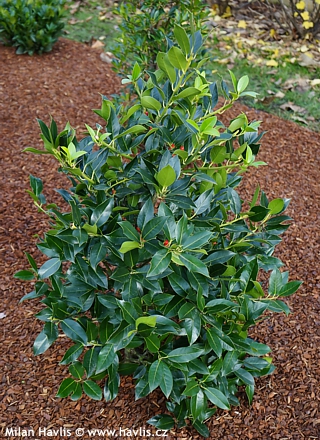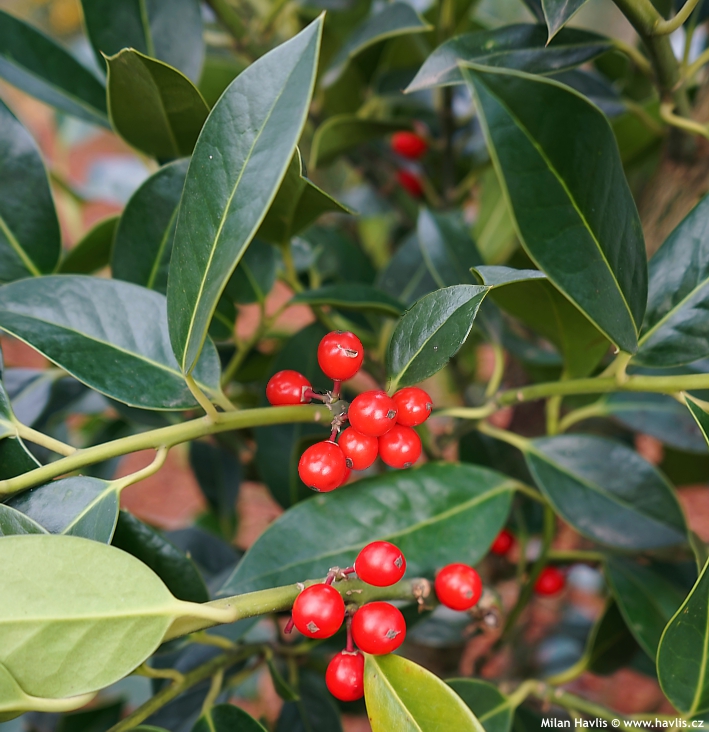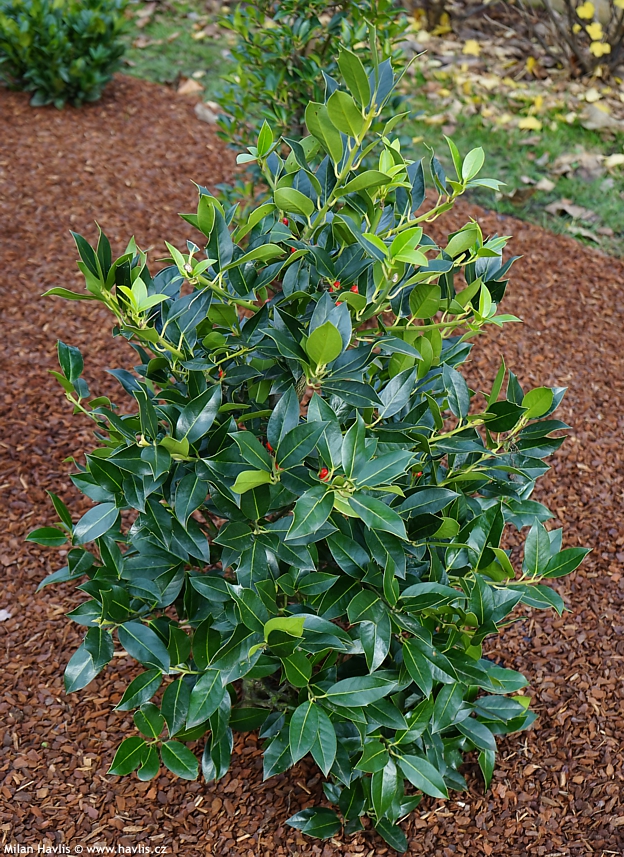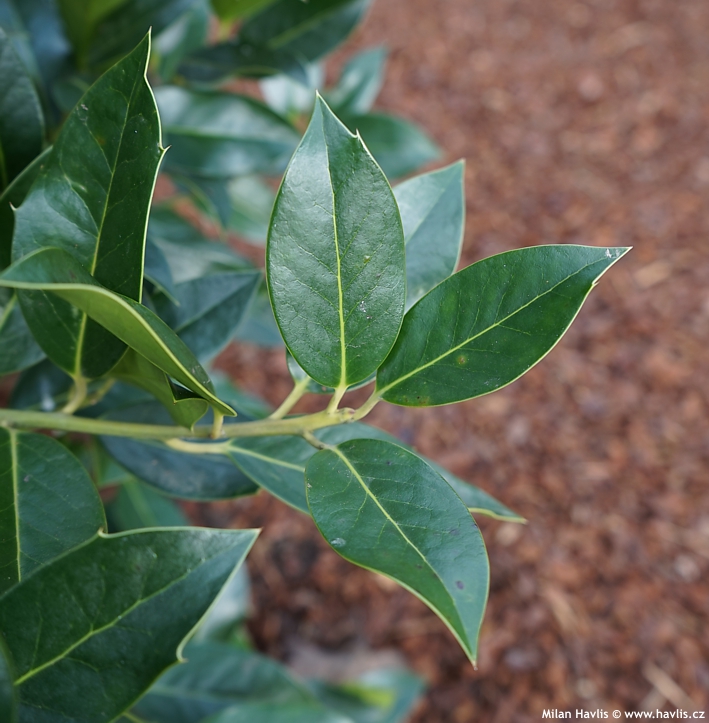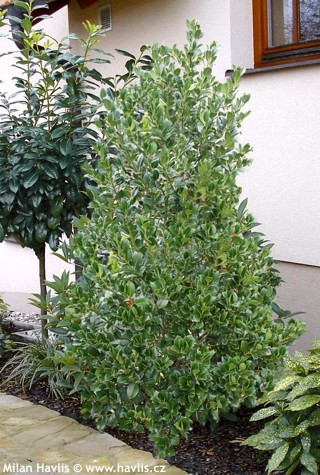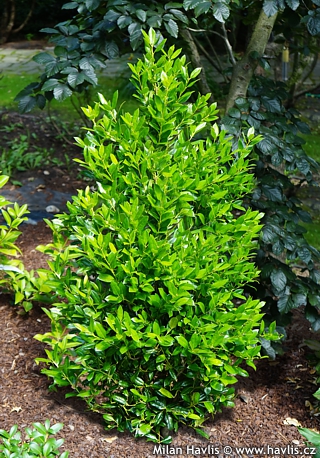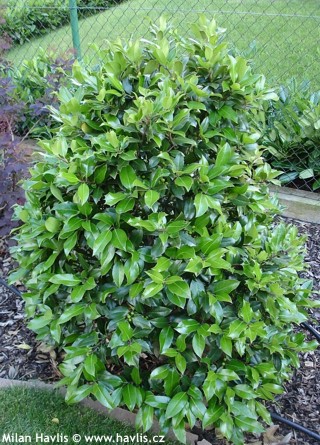Ilex x altaclerensis 'BELGICA' Highclere holly - spineless - female
size/type
medium-sized shrub,taller shrub
usual height
3-5m
usual width
2-4m
leaves
evergreen broadleaf
colour of leaves
location
full to partial sun
soil type
acidic (peaty) to neutral
soil moisture requirements
evenly moist (dislikes drought)
USDA zone (lowest)
7 (down to -23°C)
winter protection
for zone 5+6

for zone 7

categorized
Ilex
Highclere holly is a hybrid between ilex aquifolium and ilex perado, probably from England. All varieties of this hybrid are quite unique and have almost spineless, large leaves and often vigorous growth.Description of the plant:
Belgica is another spineless Highclere holly that is rare both in cultivation as well as in garden centres. It is a beautiful and robust plant producing quite large, 7-10 cm long, widely elliptic, evergreen, flat, deep green, and partially glossy leaves. It is sometimes mistaken for Camelliifolia variety but does not turn purple in winter and Belgica’s foliage is not as glossy. It is a female variety that bears vivid red berries if a male pollinator is nearby. They are not edible nor poisonous but contain saponins which cause severe discomfort if eaten.Under ideal conditions, e.g. in Benelux countries and England, it may grow quite tall and wide, whereas in our zone it makes a symmetrical, widely conical shrub that seldom exceeds 4-5m tall and 3-4m wide in full maturity. It can be pruned and shaped to maintain smaller size. Do not cut into old wood. It takes a considerable amount of time to repair its shape. Pruning in April will encourage new growths, trimming by end July is ideal for shaping.
Grow hollies in moist but well-drained, fertile soil. They can take periods of drought once established but dislike compacted, heavy-clay-based soils that turn very dry in summer, and often too wet in winter. If your soil is such, dig the planting hole only half the depth of the root ball, refine what you dig out and mix well with quality substrate of highly acidic level (low pH value). Using this mixture make a gradual slope from the stem to the original ground level and tamp it down as much as you can. Your root ball should not look like a molehill but more like a wide and flat mound. Mulch it well and keep watering it more often as it will be more prone to drying out as opposed to most common flat-in-the-ground transplanting. If you live in a region with cold winters and long-lasting frost we recommend growing it in position sheltered from drying winds, and preferably shaded from winter sun. Hardy to about -25 °C (USDA zone 6), perhaps a little more.
Last update 21-11-2020
QUICK PRICE OVERVIEW
CURRENTLY SOLD OUT
WANT TO TRY A SIMILAR PLANT?












